How to Catch Northern Pike on a Fly Rod
Pike Fly Fishing 101
by Chris Nielsen (Admin) Admin • February 23, 2021
After passionately reading Barry Reynolds "Pike on the Fly" decades ago, I headed to 11-Mile Reservoir, one of Barry's favorites, anxious to learn a new type of fly fishing. Mid-spring meant the pike would be in shallow water...and what I
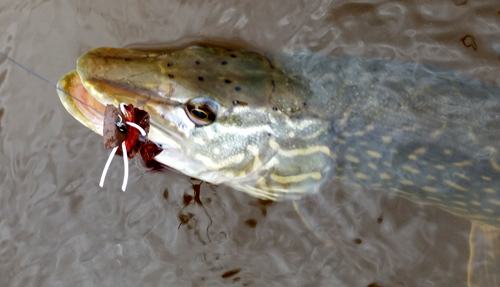
experienced that first day of pike fly fishing was a day never to forget. Pike were stacked in shallow water thick as cord wood in the morning, but not interested in any of my presentations. But as the water warmed through the day, and I found darker bottomed water, those un-interested pike became hungry and aggressive. They fed on both streamers and surface flies with reckless aggression! I landed a number of large pike that first day, and became passionate about fly fishing for pike!
What Do Northern Pike Eat?
Pike feed on practically anything they can fit in their mouth. They are the top predator. They lay motionless, waiting for their prey, and with lightning acceleration, grab their meal.
5 Tips To Catch Northern Pike On A Fly:
1) Incorporate a Seasonal Approach to Pike Fly Fishing:
Northern Pike have seasonal patterns, and being aware of this will help you locate and fish for pike efficiently.
- Spring (Spawn): Once the ice melts, pike seek the warmth of shallow water. The warmth raises their body temperature, and the need to feed increases. Target bays and edges of water, particularly where the bottom of the lake is dark colored. The north side of the lake gets more direct sun, warming the water faster.
- Summer: Once the water temperature hits about 65 Fahrenheit, larger pike head for deeper water. Underwater structure becomes important. Look for water deeper than 15', where there is a rise in the lake bottom elevation. Alternatively, the wind blown side of the lake can get churned up from the water waves, creating a mud-line that pike will often occupy, waiting to ambush an easy meal. Sinking fly Line is a must.
- Fall: Once the water temperature drops below 65 Fahrenheit, pike will move back to the shallows. Target shallow water with abundant vegetation, where baitfish congregate.
2) Understand Pike Behavior:
Pike will often follow your fly, but won't bite. How do you turn a follow-up into a strike? Try using a smaller fly, or try speeding up your retrieve.
3) Consider Water Temperature:
Cooler water generally requires a slower, more constant retrieve. When the water warms up, and pike metabolism rises, use a faster retrieve, up to 3 foot fast strips. Don't be afraid to experiment though. Pike will tell you what they like and don't like!
4) Move:
Cover large areas of water. Stand in 1 spot, cast in different directions, and once you cover that circle, move to a new spot. Pike that ignore your fly 1 time will ignore it 100 times!
5) Get Their Attention:
Pike sense vibrations in the water with their lateral line. Try stripping articulated flies that produce vibrations when stripped, or flies that "splat" when they land to get a pike's attention. That splat will make them search in the direction of the splat, so pause for a few seconds while they locate the fly, then strip!
Equipment:
Fly Rod: Pike Flies are big, and a beefier fly rod, 7 to 9 weight will handle these larger sized flies, not to mention a big pike!
Leader:6 or 7 feet of Maxima leader 20 pound test or greater.
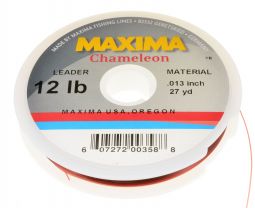 | 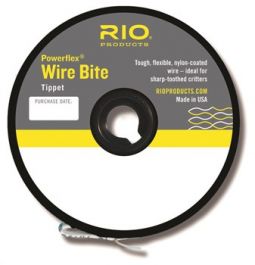 |
Tippet: Use a blood knot to tie "knotable" Wire Tippet onto the leader. Rio makes fantastic wire tippet. Don't use mono for your tippet. Pike will shred mono, and your fly and your pike will both be history.
Flies: Natural prey for pike include frogs & mice, forage fish, crawdads, salamanders.... even ducks!
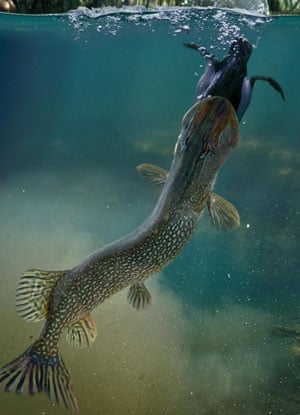
...if it fits in their mouth, it is fair game!
DiscountFlies offers a variety of Frog Flies, Mouse Flies, Salamanders & Crawdads. Here are just a few:
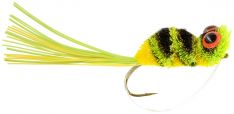 |  | 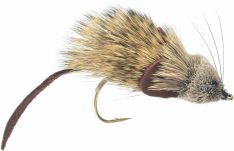 |
 | 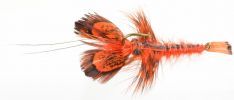 |  |
We also offer Baitfish Flies, like Clouser Minnows, Deceiver Minnows, Bunny Flies, Sculpins, & Zonkers. Here are just a few:
 |  |  |
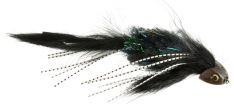 |  |  |
Top Water Pike Flies are the most exciting flies to catch a pike with. Divers, Gurglers, Snake Flies and Poppers get a Pike's attention when they are stripped, and the sight of a Pike rushing toward a top water fly, then crushing the fly is an absolute adrenaline rush! Here are a few of our topwater pike flies. See All Top Water Pike Flies
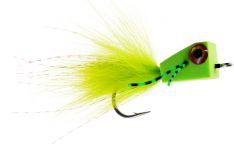 | 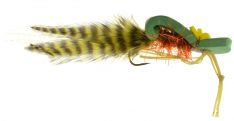 | 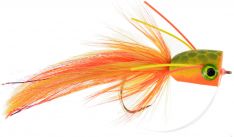 |
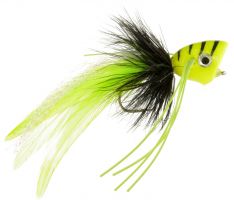 | 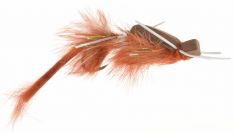 |  |
Streamers are also effective. They can be drab, like the forage bait fish, or flashy and obnoxious! Pike will feed on both.
Fly variety is key. Carry a variety of flies that vary in color from dull to flashy, flies that float, flies that sink, and a range of sizes from 3" to 12".

